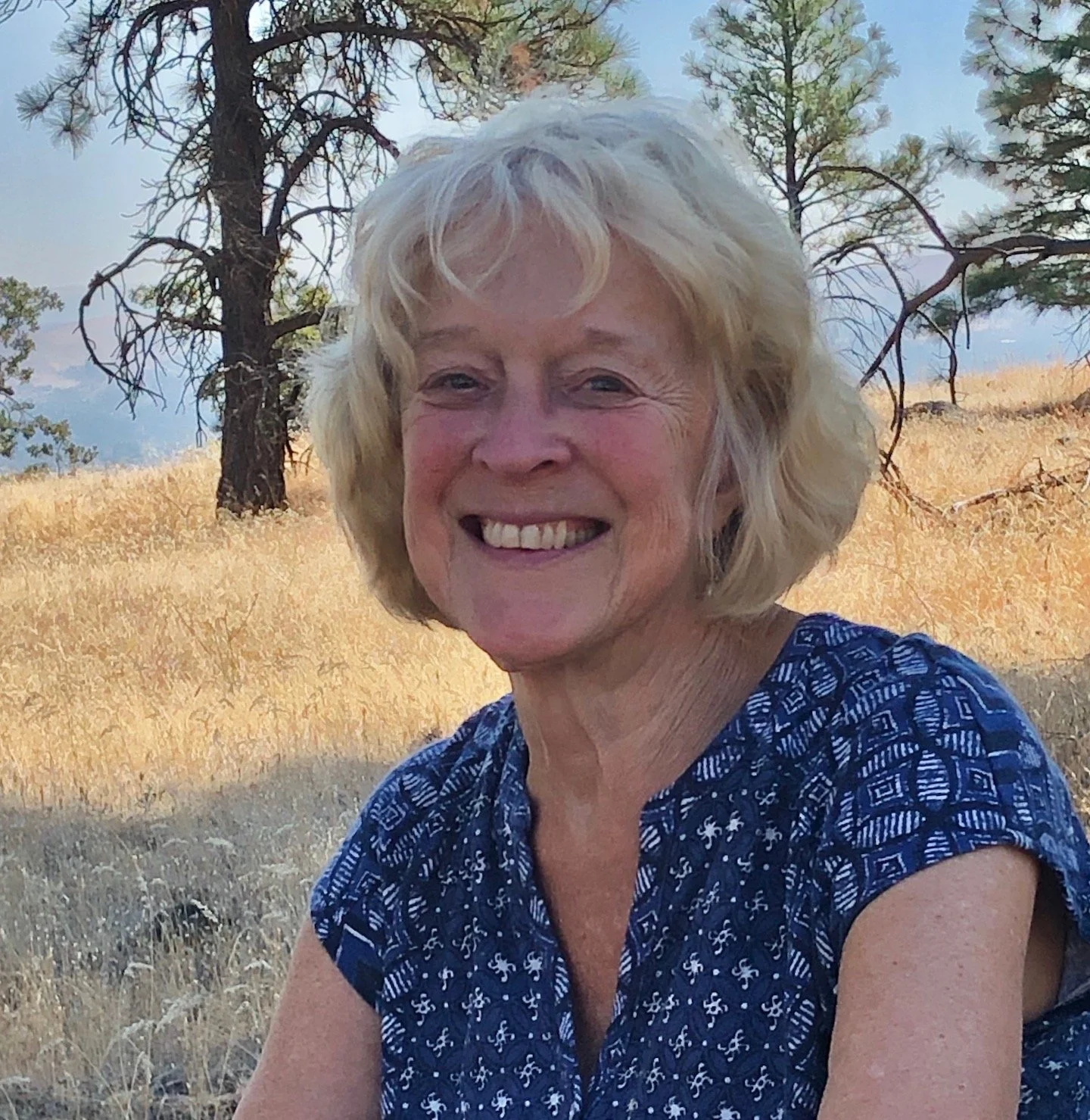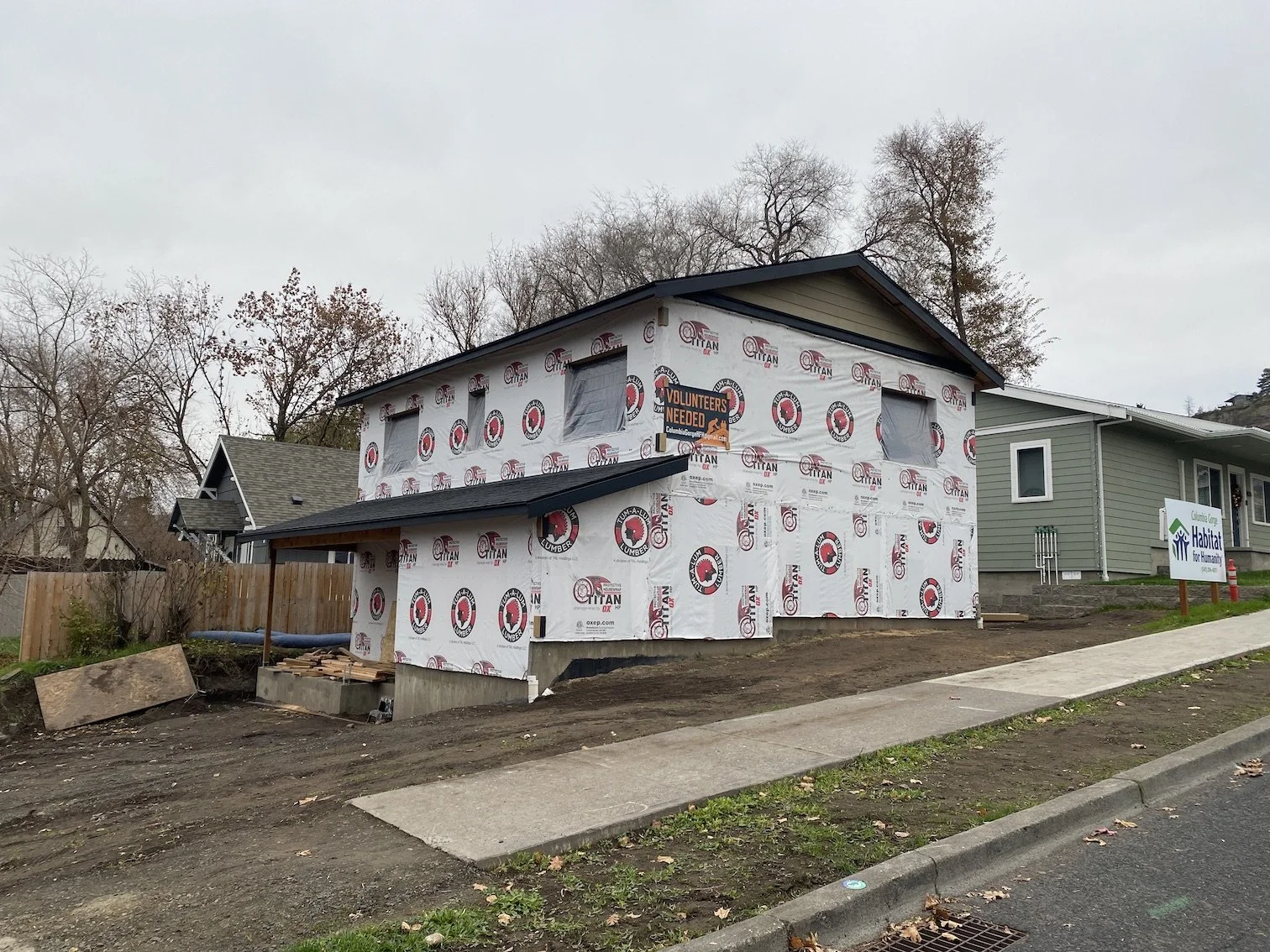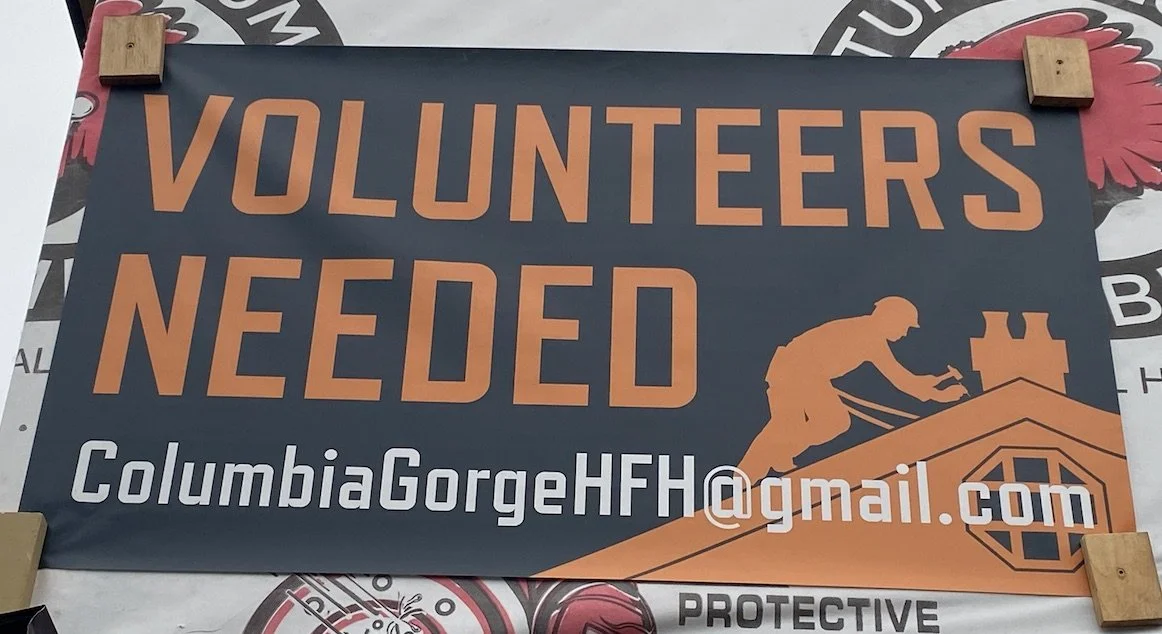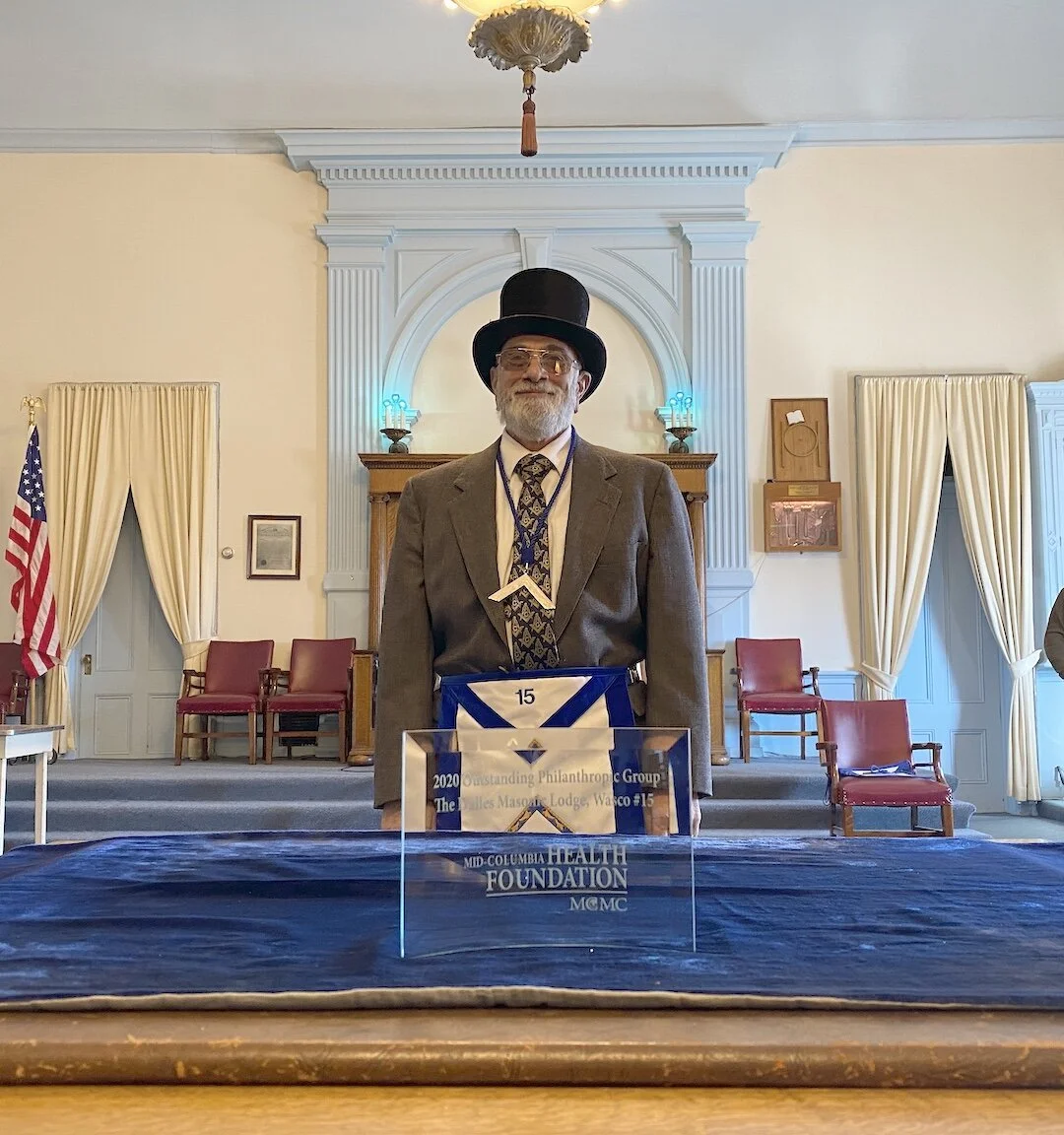Our Hidden Heroes: Episode 2; Meet Volunteer John Adams
Blood, sweat, and tears of joy
Volunteer John Adams at the Habitat for Humanity build at 13th Street and Kelly Avenue in The Dalles. The former School Teacher has 18 houses under his belt and 22 gallons of donated blood from his arm.
Editor’s Note - This is the second in a multi-part series looking at volunteering and in particular those who help build homes with Columbia Gorge Habitat for Humanity, which has been building the American Dream for locals for more than 20 years. The program helps locals achieve the purchase of a new home, but land ownership goes much deeper, creating generational wealth and pathways to better education and or skill training for the upcoming generation. Our thanks to the unsinkable Nancy Turner!
By Nancy Turner
Nancy Turner
Yes, you can teach an old dog new tricks.
Just ask John Adams.
He was a school teacher, not a craftsman. He had no training in woodworking, but he wanted to learn.
And he found a clever way to begin decades ago.
In the school where he worked was a shop class for freshmen, with two table saws and only one teacher to monitor a saw. John volunteered to be a second supervisor, to be sure one of the squirrely kids wouldn’t cut off a finger. He learned a lot about doing fine woodworking, like making cupboards for a kitchen or bathroom.
However, this wasn’t enough.
It didn’t help much when it came to building houses from the ground up. Even before he’d retired from teaching, he began volunteer work at Habitat for Humanity. That was eighteen houses ago. He may be 75, but there’s no slowing this guy down.
The other day, I stopped by the house under construction at the corner of 13th Street and Kelly Avenue. He and I sat outside. It was a cold winter day. We nearly froze our butts off sitting on a cement retaining wall between two Habitat for Humanity houses. He pulled out a thermos of hot coffee and offered me a cup. We talked about his volunteer work with Habitat.
John has volunteered for 18 years and helped construct 18 houses.
He’s no slouch; that’s for sure.
One of the things he likes about volunteering at Habitat is the camaraderie among the workers. They are there because they want to help someone out by building them a home.
Everyone’s in a good mood.
He appreciates the fact that the volunteers train the new homeowner. People who qualify for a Habitat home are required to put in hours of sweat equity. Most of them have never done carpentry before, so like John, they learn on the job.
In big cities like Portland and Salem, volunteers often don’t meet the people moving into the house they are building.
Here in The Dalles, it’s a different story.
John says it’s a rewarding process to get to know the family. A personal relationship is formed. The new owner is taught house maintenance, and anyone who has ever owned a home knows there’s always something that needs fixing.
Do you know when a homeowner is done fixing their house? When they die.
Here is the house being built at 13th Street and Kelly Avenue. The house to the right is also a Habitat project that was finished last year.
Normally the crew likes to start work on a new house in May and get it done by fall. The house they are currently building has taken longer than usual due to complications at the site. They had to do extra foundation work. And this house is bigger than the one next door. It probably won’t be ready for occupancy until April. John can feel that clock ticking. Soi, if one of his grandkids have an event at school or need something from grandpa, nobody begrudges him when he leaves for a few hours to do some work on the home.
When I asked John about other volunteering he’d done, he mentioned being on the board of The Dalles Art Center for a couple of years, and for many years he was treasurer at his church.
Then he told me something that put him in a class of volunteers I’d never thought of. He’s donated twenty-two gallons of blood. Not all at once, of course, but over the years. When he told me this, I tried to imagine 22-gallon jugs, like milk jugs, full of red blood, lined up along the sidewalk.
Undoubtedly, his donations have saved many lives. If it’s not needed locally, it might be sent to Florida, or anywhere in the country. He has received cards in the mail stating where the blood went, and who it was used for.
For twenty years John has been treasurer of the local Masonic Lodge. He believes in their mission of helping kids. Each year they provide $3,000 college scholarships to six high school kids in Sherman and Wasco counties. They also give teachers grants of $12,000-15,000 for school supplies. They support a program called, “Bikes for Books.” Kids in elementary schools write their names on a piece of paper and put it in a jar. Twice a year there’s a drawing and two lucky kids receive a new bike, along with a helmet and bike lock. The Masonic Lodge gives each elementary school in Wasco and Sherman counties two bikes, twice a year.
Hurricane Katrina was a horrible event for thousands of people. Many not only lost their homes but were also swindled by insurance companies and individuals who defrauded the Federal Emergency Management Agency, (FEMA).
Five years after the devastation, John joined a crew of workers who went to New Orleans for a week at a time, for several years, to help rebuild houses. He told me about one family, made up of three generations, whose house was flooded.
For emergency housing, the grandmother was sent to Alabama, and her daughter and grandson were sent to Texas. Nobody understood why the family was split up. The house was insured, but the insurance policy didn’t have full replacement coverage. The grandmother’s great-grandfather originally bought the house and passed it down through the generations without ever legally changing the title. It just stayed in the family. FEMA required a clear title, so it would not contribute any financial assistance. It took the Episcopal church and volunteers like John to rebuild their home.
Another place John volunteered was Haiti, a small country in the Caribbean. That was a real eye-opener. It’s a fourth-world country, meaning it is one of the most underdeveloped, poverty-stricken, and marginalized populations of the world.
Volunteers were very careful where they ate, and only drank bottled water. As he put it, “To qualify to be a teacher there, you have to be alive.” The teachers get no training and have little or no school materials. No books. They had no idea how to read books to kids. Most had never had a story read to them as kids. Teachers stood in front of the class, with their backs to the kids, writing on the blackboard.
In one school he found boxes of books that had been shipped to Haiti from the US. They’d never even been unpacked. He got busy building bookshelves and tables and unpacking boxes. There’s only so much you can accomplish in a week, but he and other volunteers taught teachers basic teaching skills to engage kids in the learning process. Like how to read storybooks to children.
Ah, the things we take for granted.
One could say volunteering is in John’s blood. It brings him joy to be helpful. The world is a better place because of people like John Adams.
If you want to follow in his footsteps, contact Habitat for Humanity. You will learn new skills, meet dynamic people, and reap the rewards of being generous with your time and energy. It’s a win-win all the way around.
Support Local News
Available to everyone. Funded by readers.





